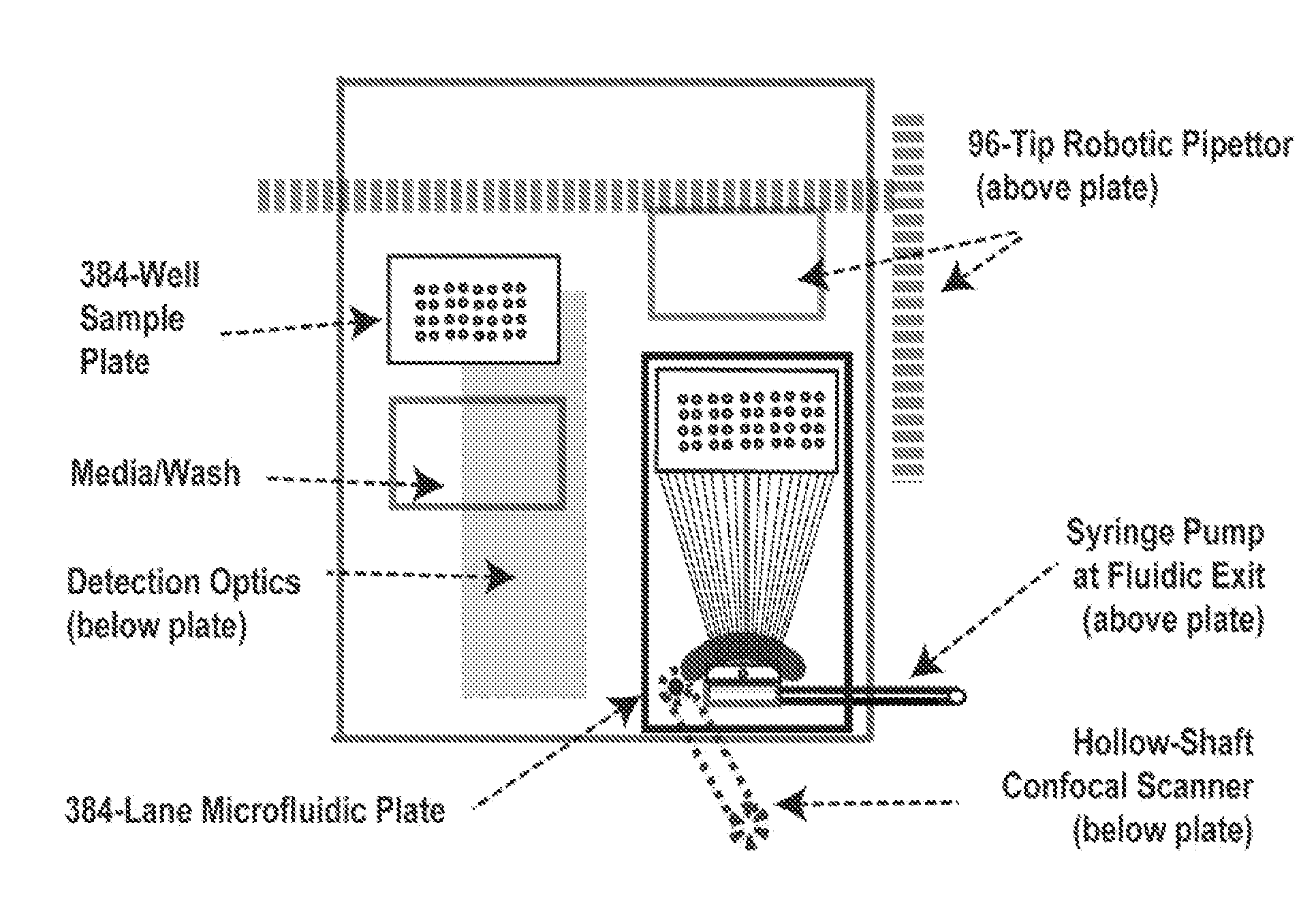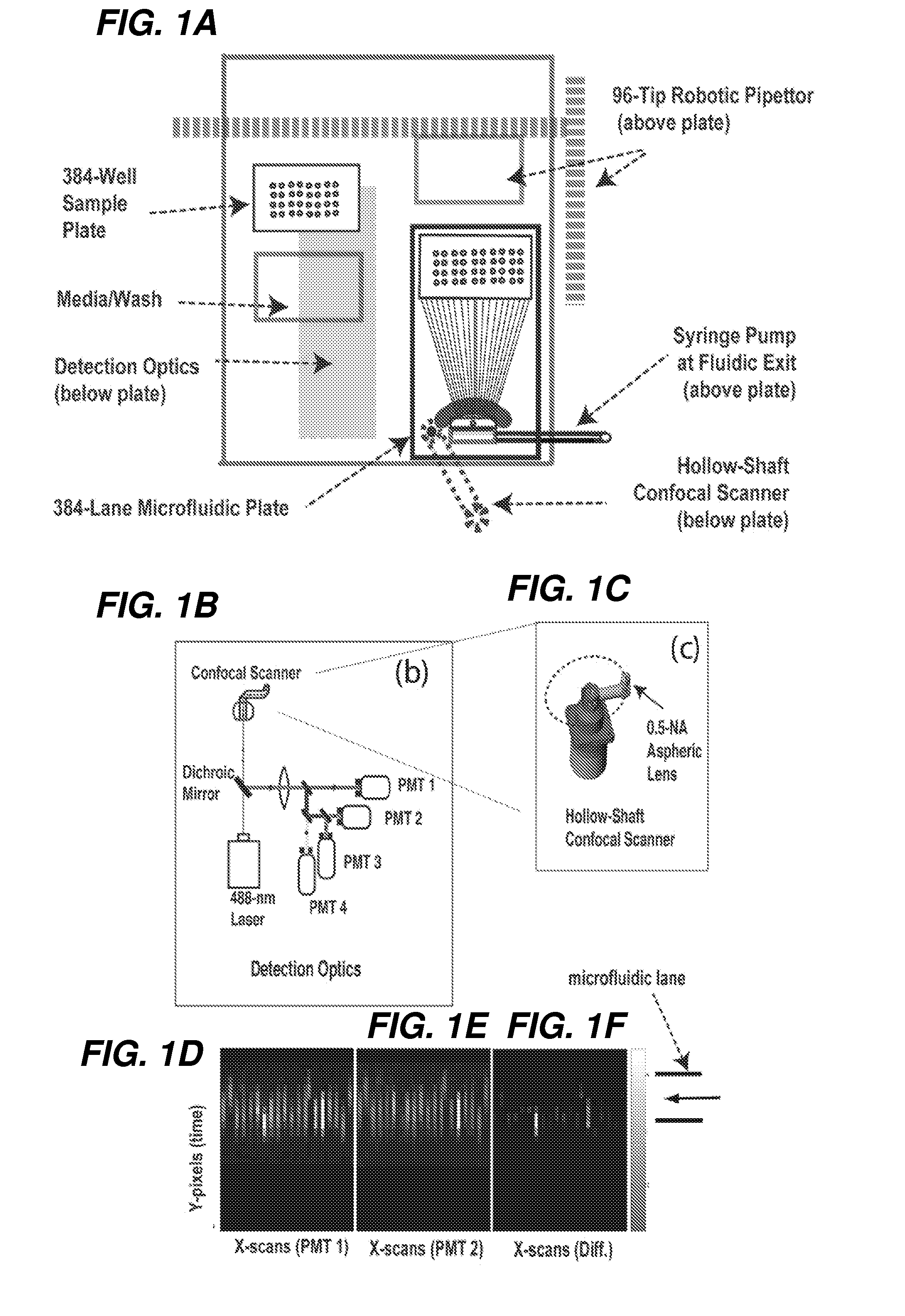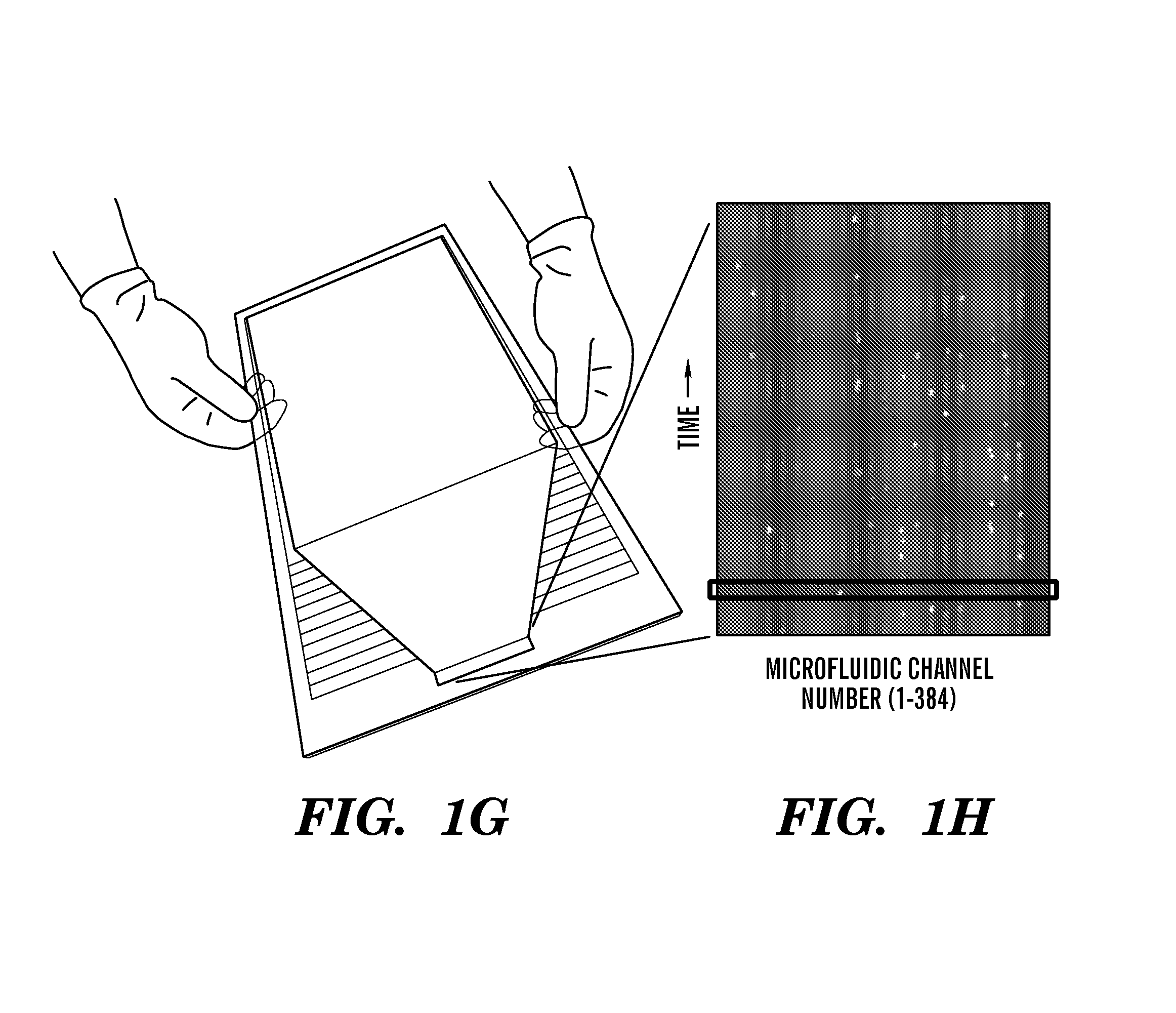High throughput multichannel reader and uses thereof
a multi-channel reader and high-throughput technology, applied in the field of high-content screening, can solve problems such as time-consuming, and achieve the effects of high content screening, high throughput, and high-content screening
- Summary
- Abstract
- Description
- Claims
- Application Information
AI Technical Summary
Benefits of technology
Problems solved by technology
Method used
Image
Examples
example 1
[0319]The design of a PMC differs from a FACS in (1) its need for a wide field of view detector (rather than a focused point detector), (2) its need for automation to support parallel sample transfer, (3) its differing needs for data processing and (4) the design of the microfluidic itself. The detector of the PMC is more complex than a FACS detector since the wide-field requirement mandates the use of a scanner and permits high-speed imaging.
[0320]An exemplary automated PMC is shown herein in FIGS. 14 and 15. The microfluidic flow devices can be mounted on a top plate and can be serviced with a gantry robot combined with a sample elevator that handles 384-well microtiter plates. In one embodiment, the fluid handling is via an integrated 96-tip pipettor that permits automated maintenance of 384-well plates on a temperature controlled base. The sample deck can include positions for nutrient / wash trays that can also be accessed by the pipettor. As a result, live cell cultures can be s...
example 2
[0346]Algorithms that distinguish common protein location patterns in live and fixed cells using line-scan imaging. As the cells flow through the microdevice they cross over the detection window where a scanner is moving (e.g., every 1 / 100 of a second) and recording emitted fluorescence values every 1 μm across the 100-μm-wide channels. The fluorescence values recorded by the separate PMT's are then converted to 16-bit digital values and sent to the computer where they are assembled in computer memory as 10 line-scan images per cell (hardware below, Sect. Example 3).
[0347]Once the system has determined that a cell has just passed over the line-scanner, the pixel matrix that represents that cell is sent to a cell-typing algorithm. This assay-specific algorithm measures features about the cell using the florescence levels from PMT's individually and in comparison to each other (Table 1). Feature values from the algorithm will be calculated in microseconds, allowing the cell to be iden...
example 2.1
[0348]Classification by 1-D images: The inventors developed line-scan imaging algorithms for high-throughput, high-content image-based screening. Microscope-based (imaging) assays provide higher content than can be obtained by un-resolved total fluorescence, i.e., FACS. A key aspect for fluorescence localization assays will be fast image-analysis algorithms for binning of events. The economy of “line-scan” images (when compared to CCD images) is a computational advantage (Gonzales, R. C and Woods, R. E., Digital Image Processing, Prentice Hall, Upper Saddle N.J., 2002). The inventors prove the robustness of these “more economical” scans.
[0349]The classification ambiguity typical from 1-D imaging and as it relates to a protein-localization assay is illustrated for 2-colors in FIG. 6. By extracting only 1-D images, the feature set is greatly reduced with new classes of ambiguity relative to a conventional 2-D image; distinguishing features become asymmetries, profile shape factors, an...
PUM
| Property | Measurement | Unit |
|---|---|---|
| diameter | aaaaa | aaaaa |
| diameter | aaaaa | aaaaa |
| diameter | aaaaa | aaaaa |
Abstract
Description
Claims
Application Information
 Login to View More
Login to View More - R&D
- Intellectual Property
- Life Sciences
- Materials
- Tech Scout
- Unparalleled Data Quality
- Higher Quality Content
- 60% Fewer Hallucinations
Browse by: Latest US Patents, China's latest patents, Technical Efficacy Thesaurus, Application Domain, Technology Topic, Popular Technical Reports.
© 2025 PatSnap. All rights reserved.Legal|Privacy policy|Modern Slavery Act Transparency Statement|Sitemap|About US| Contact US: help@patsnap.com



